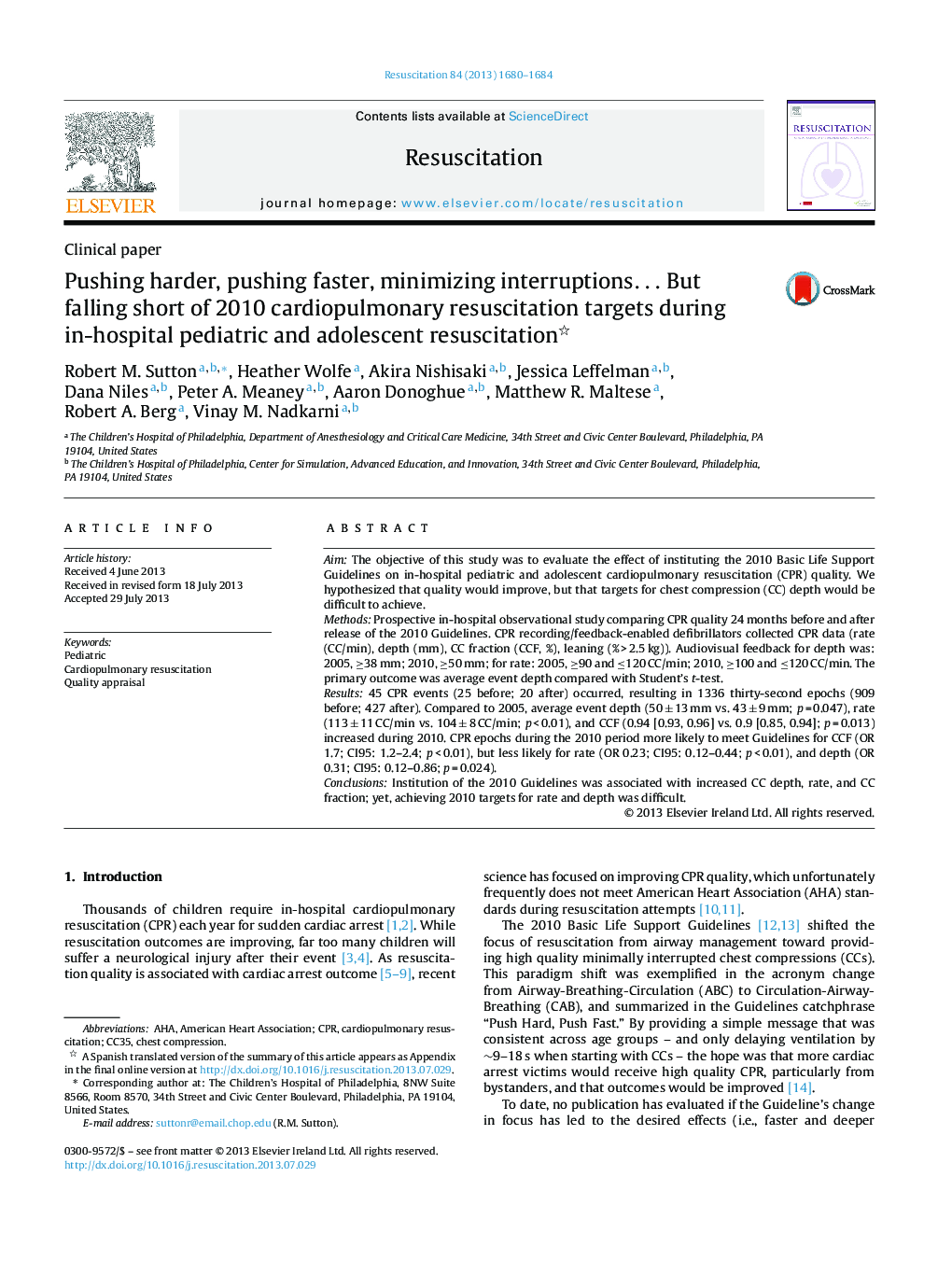| Article ID | Journal | Published Year | Pages | File Type |
|---|---|---|---|---|
| 3008360 | Resuscitation | 2013 | 5 Pages |
AimThe objective of this study was to evaluate the effect of instituting the 2010 Basic Life Support Guidelines on in-hospital pediatric and adolescent cardiopulmonary resuscitation (CPR) quality. We hypothesized that quality would improve, but that targets for chest compression (CC) depth would be difficult to achieve.MethodsProspective in-hospital observational study comparing CPR quality 24 months before and after release of the 2010 Guidelines. CPR recording/feedback-enabled defibrillators collected CPR data (rate (CC/min), depth (mm), CC fraction (CCF, %), leaning (% > 2.5 kg)). Audiovisual feedback for depth was: 2005, ≥38 mm; 2010, ≥50 mm; for rate: 2005, ≥90 and ≤120 CC/min; 2010, ≥100 and ≤120 CC/min. The primary outcome was average event depth compared with Student's t-test.Results45 CPR events (25 before; 20 after) occurred, resulting in 1336 thirty-second epochs (909 before; 427 after). Compared to 2005, average event depth (50 ± 13 mm vs. 43 ± 9 mm; p = 0.047), rate (113 ± 11 CC/min vs. 104 ± 8 CC/min; p < 0.01), and CCF (0.94 [0.93, 0.96] vs. 0.9 [0.85, 0.94]; p = 0.013) increased during 2010. CPR epochs during the 2010 period more likely to meet Guidelines for CCF (OR 1.7; CI95: 1.2–2.4; p < 0.01), but less likely for rate (OR 0.23; CI95: 0.12–0.44; p < 0.01), and depth (OR 0.31; CI95: 0.12–0.86; p = 0.024).ConclusionsInstitution of the 2010 Guidelines was associated with increased CC depth, rate, and CC fraction; yet, achieving 2010 targets for rate and depth was difficult.
